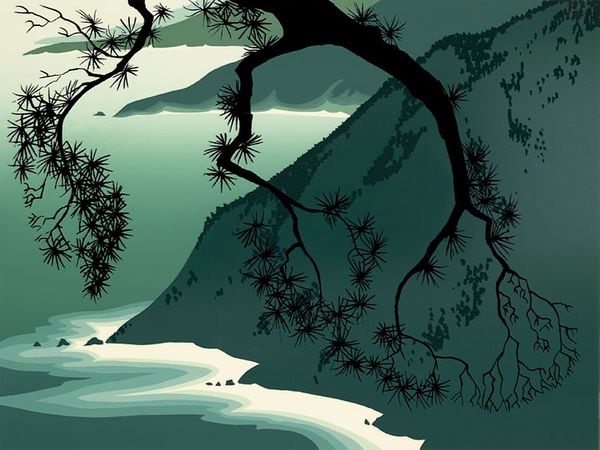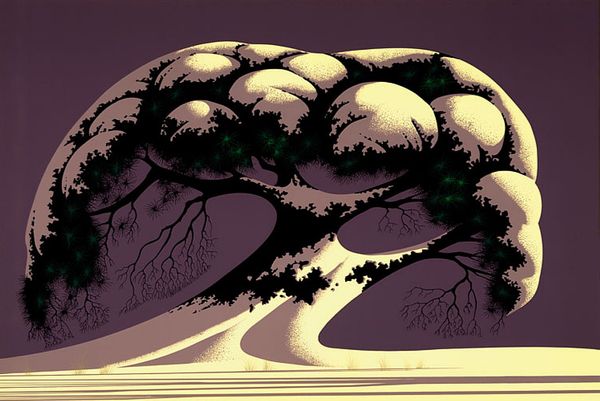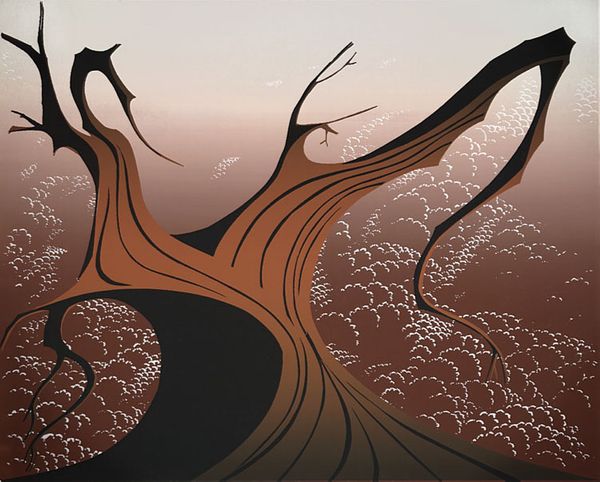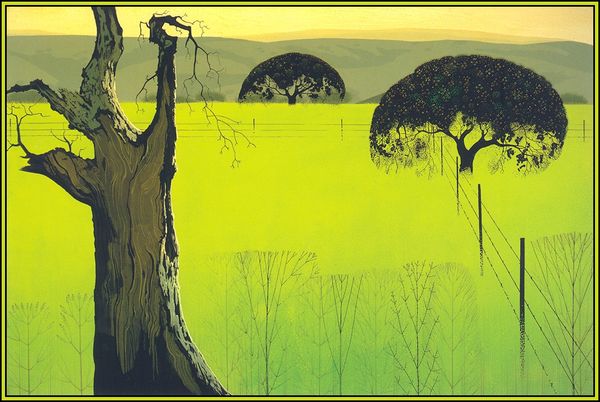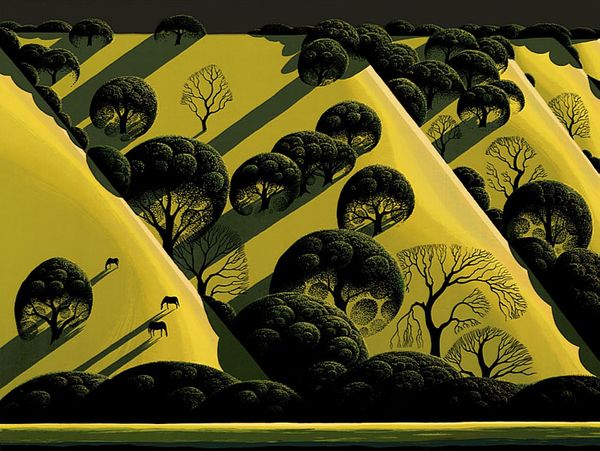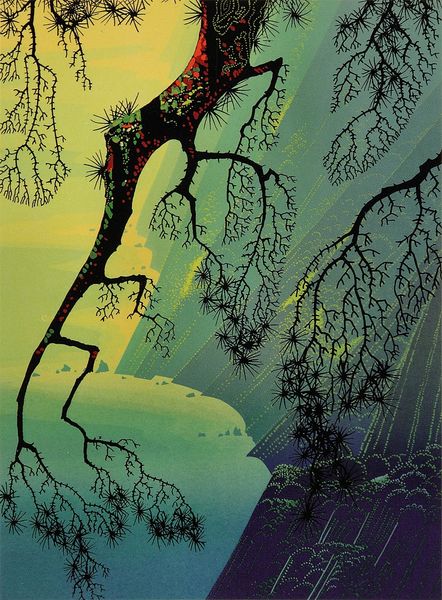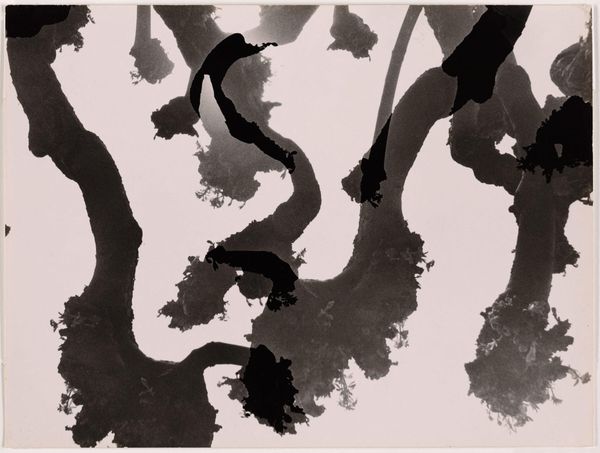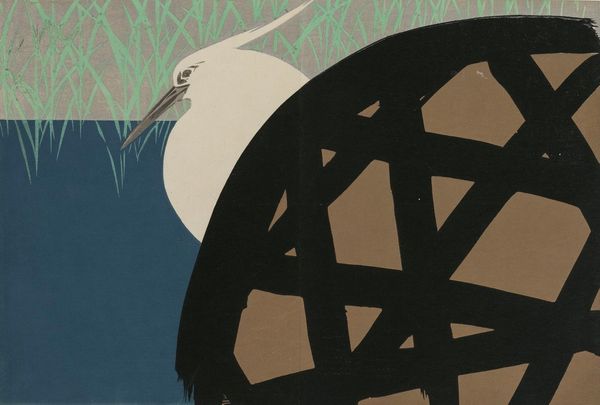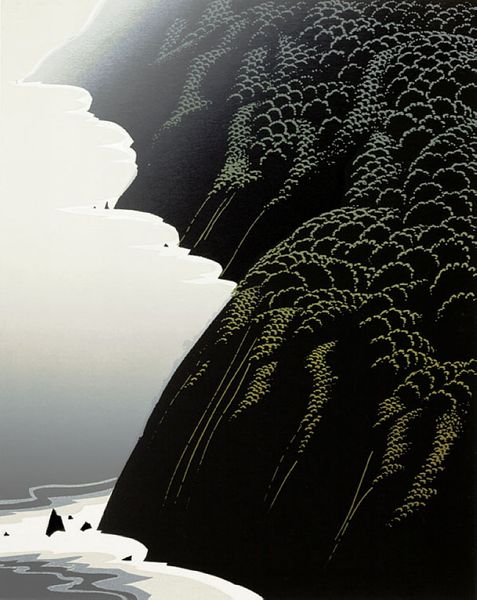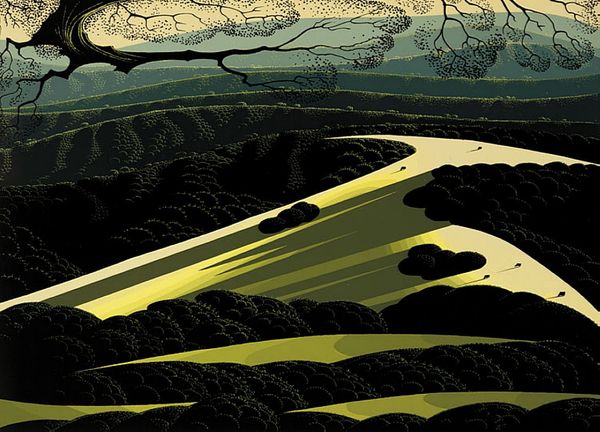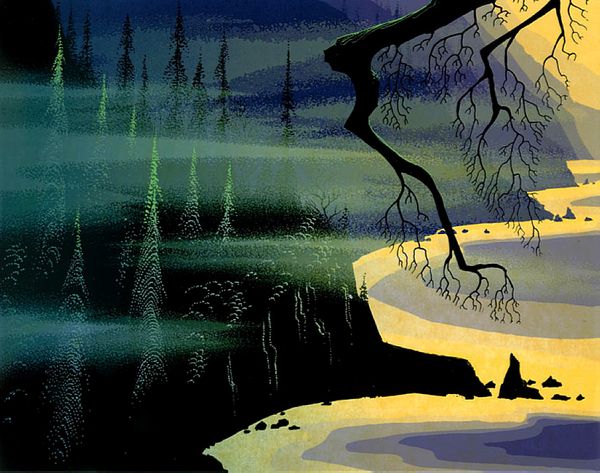
painting
#
tree
#
contemporary
#
painting
#
digital art
#
landscape
#
caricature
#
figuration
#
cartoon
#
plant
#
abstraction
Copyright: Eyvind Earle,Fair Use
Editor: Here we have Eyvind Earle's "Santa Ynez Valley," painted in 1979. It has such a stark, almost theatrical quality, with that imposing tree in the foreground. How do you interpret this work? Curator: Well, immediately I'm struck by the enduring motif of the tree, that skeletal sentinel. For centuries, across cultures, the tree has served as a potent symbol—a connection between the earthly and the divine, life and death, resilience and fragility. How does this stark landscape make you feel, knowing that it's a specific place, yet also seemingly timeless? Editor: It feels very lonely and quiet. Almost surreal. The shadows and flattened perspective add to that feeling. Curator: Exactly. Notice the way Earle manipulates light and shadow, exaggerating forms into almost caricatures. These aren't merely aesthetic choices. The contrast emphasizes a certain psychological tension, reflecting a shared human experience of nature, of confronting mortality within such vast spaces. This landscape doesn't just exist; it resonates. Does it evoke any personal associations for you? Perhaps a dreamscape, a memory? Editor: Now that you mention it, there's something very dreamlike about the repetitive shapes of the bushes, and how they contrast with the sharp lines of the tree. It reminds me a bit of a stage set, where everything is slightly off. Curator: And isn't that fascinating? How Earle invites us to project our inner worlds onto this landscape. The valley becomes less about geography and more about psychology—our enduring fascination with the landscape and our individual experience within it. Editor: I see what you mean! It's much more than just a landscape painting, isn't it? It’s about how landscapes resonate with our internal symbolism. Curator: Precisely. And by understanding the power of recurring visual symbols, we can deepen our appreciation for Earle's work and our shared cultural memory.
Comments
No comments
Be the first to comment and join the conversation on the ultimate creative platform.
